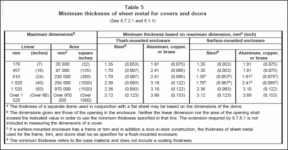Thank you so much, the ac duct came after the panel and messed everything up.The picture should have been given right off. The panel has to be moved. Inspector correct in calling it out.
Their is no way to make that location work even with the workaround given by Wayne now that we see a picture. IDK to start with who would have thought that this would be a good location, or how installing in that location was workable with all that HVAC equipment in the way. I certainly would never have wanted to struggle to put a panel up there.
Your 1st argument in post #17 is still wrong it doesn't matter that you can de-energize or not it is a breaker panel not just a junction box.
This picture makes me question, what was there first, the panel or HVAC?
If the panel was first you have an argument with the HVAC installer not the inspector. If however the HVAC was first, shame on the installer as that should have been recognized by the electrician as never compliant. (Let alone the real hassle to place it there, and to work on it.)
Simply if the panel was install to the picture right of the ducts I don't think the inspector would have had called out horizontal working space as an issue. If I could stand in front of the panel with nothing to climb over or to trip over to work on it horizontal space I would "let it go". Your excuse of that it can be de-energize would only make application of equipment dedicated space 110.26(E)(1) a workaround, and it would allow a narrower space for equipment, but all that "foreign" equipment located as installed is still a violation of that where the panel is now. There are 2 portions to 110.26, working space and dedicated equipment space.
That is not really a conditioned space as you mentioned in post #8, the sheetrock based on there being double layer on wall was meant as seperation for the attic mechanical room and no appearance of conditioned air for that space visually present, and actually would be not usually done, for the AC mechanical space, many times when I worked for a GC we would install a double layer as a fire barrier but the unsealed duct penetration invalidates that application.
Bottom line, something has to move.
Putting on the right side wall leaves less than 30" depth. I will put it on the right side wall but facing outside the room so all these space issues are resolved.
Now with that picture in place ...
Can I leave that panel there as junction box, pull out the 20amp breakers to use in the new panel and leave the 100amp breaker in there just because I don't want to have the empty space in the cover? Will close the empty 20amp spots with fillers.


